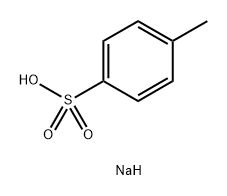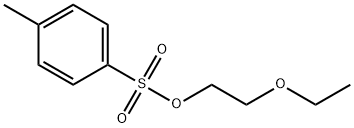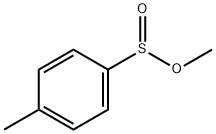PENTA(ETHYLENE GLYCOL) DI-P-TOLUENESULFONATE
Synonym(s):3,6,9,12-Tetraoxatetradecane-1,14-diyl ditosylate;Pentaethylene glycol ditosylate
- CAS NO.:41024-91-3
- Empirical Formula: C24H34O10S2
- Molecular Weight: 546.65
- MDL number: MFCD00012204
- SAFETY DATA SHEET (SDS)
- Update Date: 2025-01-27 09:38:02

What is PENTA(ETHYLENE GLYCOL) DI-P-TOLUENESULFONATE?
Description
Tos-PEG6-Tos is a PEG linker containing two tosyl groups. The hydrophilic PEG spacer increases solubility in aqueous media. The tosyl group is a very good leaving group for nucleophilic substitution reactions.
The Uses of PENTA(ETHYLENE GLYCOL) DI-P-TOLUENESULFONATE
PENTA(ETHYLENE GLYCOL) DI-P-TOLUENESULFONATE is used to prepare calix[4]arenes,1 calix[5]arenes,2 and crown ethers.3
The Uses of PENTA(ETHYLENE GLYCOL) DI-P-TOLUENESULFONATE
Pentaethylene glycol di-p-toluenesulfonate is used in the preparation of calix[4]arenes, calix[5]arenes, and crown ethers. It is also used in the preparation of 3?-formylbenzo-18-crown-6 by undergoing coupling reaction with 2,3-dihydroxybenzaldehyde.
Properties of PENTA(ETHYLENE GLYCOL) DI-P-TOLUENESULFONATE
| Boiling point: | 661.4±55.0 °C(Predicted) |
| Density | 1.26 g/mL at 25 °C (lit.) |
| refractive index | n |
| Flash point: | >230 °F |
| form | Solid-Liquid Mixture |
| color | Off-white to light brown |
| Water Solubility | Not miscible or difficult to mix in water. |
| Sensitive | Hygroscopic |
| BRN | 3599245 |
| EPA Substance Registry System | 3,6,9,12-Tetraoxatetradecane-1,14-diol, bis(4-methylbenzenesulfonate) (41024-91-3) |
Safety information for PENTA(ETHYLENE GLYCOL) DI-P-TOLUENESULFONATE
| Signal word | Warning |
| Pictogram(s) |
 Exclamation Mark Irritant GHS07 |
| GHS Hazard Statements |
H315:Skin corrosion/irritation H319:Serious eye damage/eye irritation H335:Specific target organ toxicity, single exposure;Respiratory tract irritation |
| Precautionary Statement Codes |
P261:Avoid breathing dust/fume/gas/mist/vapours/spray. P264:Wash hands thoroughly after handling. P264:Wash skin thouroughly after handling. P271:Use only outdoors or in a well-ventilated area. P280:Wear protective gloves/protective clothing/eye protection/face protection. P302+P352:IF ON SKIN: wash with plenty of soap and water. P305+P351+P338:IF IN EYES: Rinse cautiously with water for several minutes. Remove contact lenses, if present and easy to do. Continuerinsing. |
Computed Descriptors for PENTA(ETHYLENE GLYCOL) DI-P-TOLUENESULFONATE
New Products
3-Iodophenylacetic acid 3-Pyridineacetonitrile, α-hydroxy- 2-Propanamine, 1-chloro-, hydrochloride (9CI) 3-(hexyloxy)-4-(pyridin-3-yl)-1,2,5-thiadiazole 2-Hexyn-1-ol Dibenzo-18-crown-6 Nickel(II) perchlorate hexahydrate, 98% 4-Bromophenylacetonitrile, 95% 3-Bromo-4-fluoroaniline, 97% Sodium tetraborate decahydrate, 98% Palladium(II) acetate, trimer, Pd 99% 4-Bromo-2-chlorotoluene, 97% N N Dimethylformamide Dimethyl Acetal (Dmf Dma) 2,3-Dichloro Benzoyl Cyanide [Side Chain] Bis(2-Chloroethyl) Amine Hydrochloride L-Glutamic Acid Diethyl Ester Hydrochloride 5-(Difluoromethoxy)-2-Mercaptobenzimidazole 1-Ethyl-3-(3-Dimethylaminopropyl)-Carbodiimide Hydrochloride [EDC Hcl] 1,4-Napthoquinone Bromoiodomethane Sodium Bicarbonate Methylene Dichloride (MDC) Ethyl Acetate Indole-3-Carbinol (I3C)Related products of tetrahydrofuran








You may like
-
 Pentaethylene glycol di-p-toluenesulfonate CAS 41024-91-3View Details
Pentaethylene glycol di-p-toluenesulfonate CAS 41024-91-3View Details
41024-91-3 -
 Pentaethylene glycol di(p-toluenesulfonate) CAS 41024-91-3View Details
Pentaethylene glycol di(p-toluenesulfonate) CAS 41024-91-3View Details
41024-91-3 -
 17604-74-9 3-Pyridineacetonitrile, α-hydroxy- 98+View Details
17604-74-9 3-Pyridineacetonitrile, α-hydroxy- 98+View Details
17604-74-9 -
 131987-69-4 98+View Details
131987-69-4 98+View Details
131987-69-4 -
 Cyclohexane, (2-propynyloxy)- 67967-07-1 98+View Details
Cyclohexane, (2-propynyloxy)- 67967-07-1 98+View Details
67967-07-1 -
 2-Propanamine, 1-chloro-, hydrochloride (9CI) 98+View Details
2-Propanamine, 1-chloro-, hydrochloride (9CI) 98+View Details
5968-21-8 -
 3-Iodophenylacetic acid 1878-69-9 98+View Details
3-Iodophenylacetic acid 1878-69-9 98+View Details
1878-69-9 -
 132945-75-6 (S)-1-Boc-3-methanesulfonyloxy-pyrrolidine 98+View Details
132945-75-6 (S)-1-Boc-3-methanesulfonyloxy-pyrrolidine 98+View Details
132945-75-6
Statement: All products displayed on this website are only used for non medical purposes such as industrial applications or scientific research, and cannot be used for clinical diagnosis or treatment of humans or animals. They are not medicinal or edible.
